We were introduced to Lesley Richmond’s work when we were researching our recent article about nature-inspired artists. Originally from Cornwall in England, Lesley trained as an art teacher at Middlesex University and Western Washington University. For 30 years she juggled working as a studio artist with being a tutor on the Textile Arts program at Capilano University, Vancouver. Lesley’s work can be seen the world over in galleries such as Baltimore Museum of Art, the Central Museum of Textiles in Poland, and Cheongju International Craft Biennale in Korea.
Here Lesley tells us about working in devore technique, which involves a gel containing sodium hydrogen sulphate being applied to velvet containing a blend of cellulose fiber and protein-based fiber such as silk.
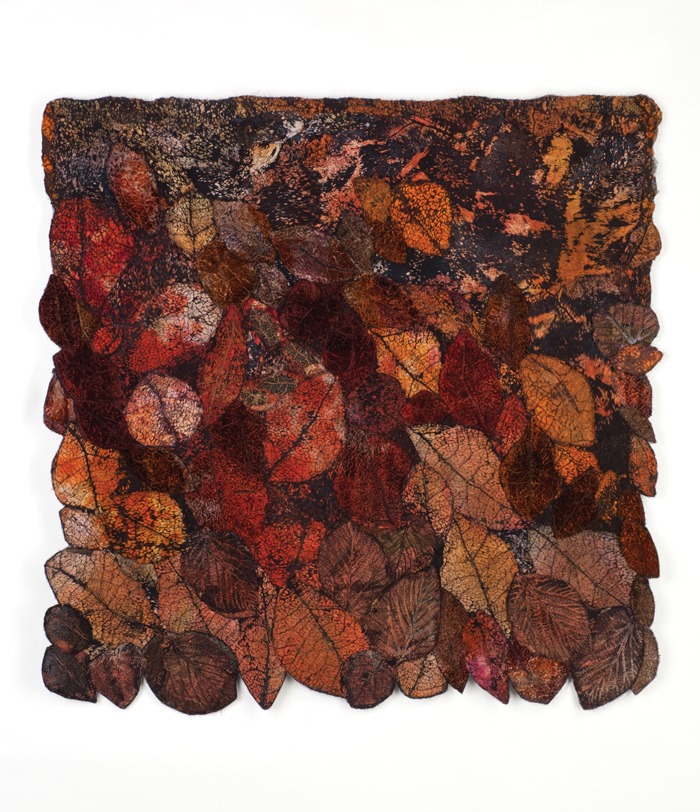
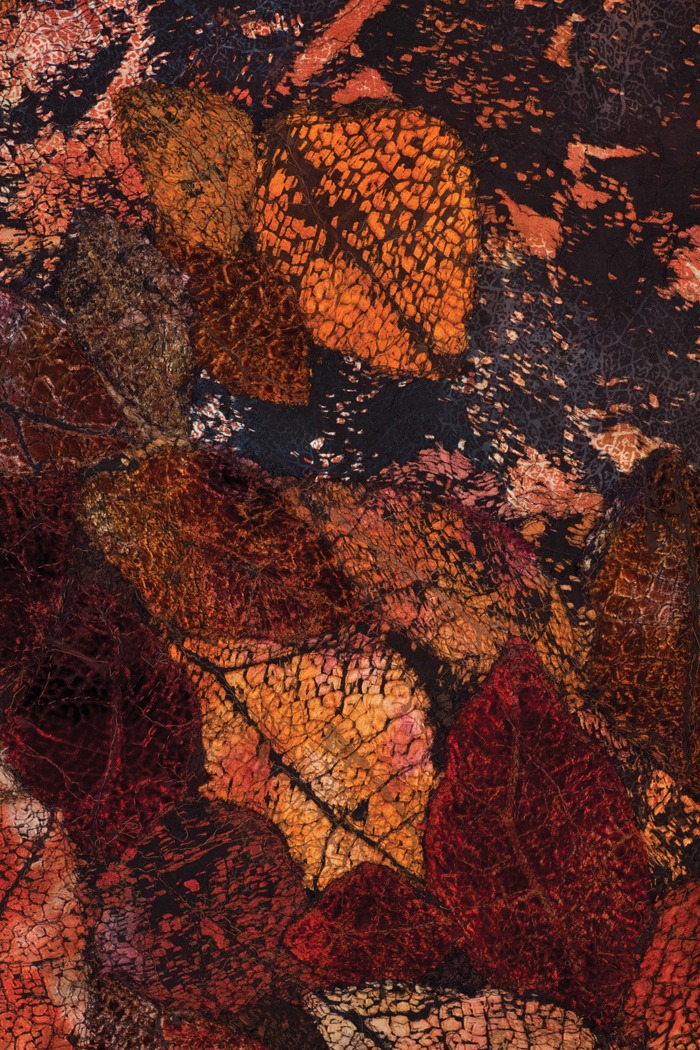
Fascinated with devore
What initially captured your imagination about textile art?
I encountered textiles in my last year at College in England. I enjoyed the rich colours and textures of this medium.
What or who were your early influences and how has your life/upbringing influenced your work?
My mother was an expert knitter and my father enjoyed marquetry in his spare time, while he was on overseas duty in the Royal Navy.
What was your route to becoming an artist?
I was very interested in art in school. I enjoyed painting and drawing and took A level Art. At Trent Park College (now Middlesex University), I specialized in Fine Arts and discovered textiles in my last year. I took a Masters degree in the US, specializing in textile education. I became a Textile Arts teacher, for 30 years, at Capilano College, Vancouver, Canada.
What is your chosen medium and what are your techniques ?
I joined the US Surface Design Association and attended their conferences regularly. They demonstrated new techniques and I became fascinated with devore technique and I have used it in many different ways for the last 15 years.
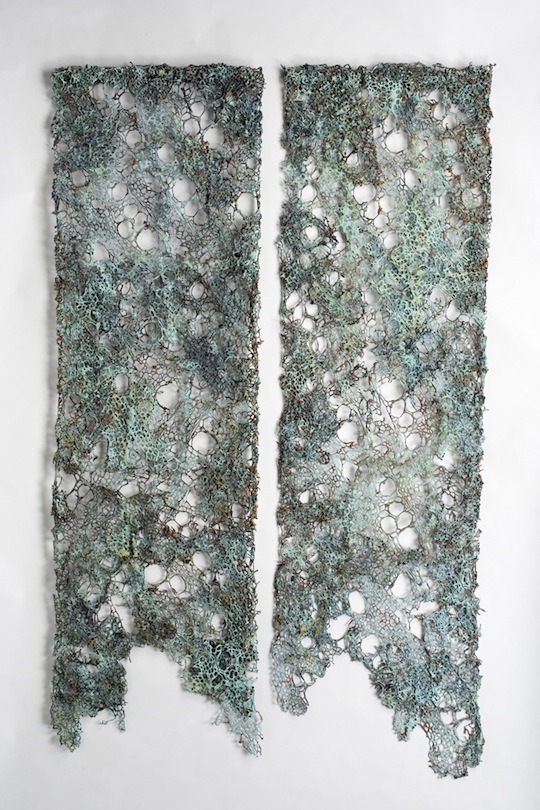
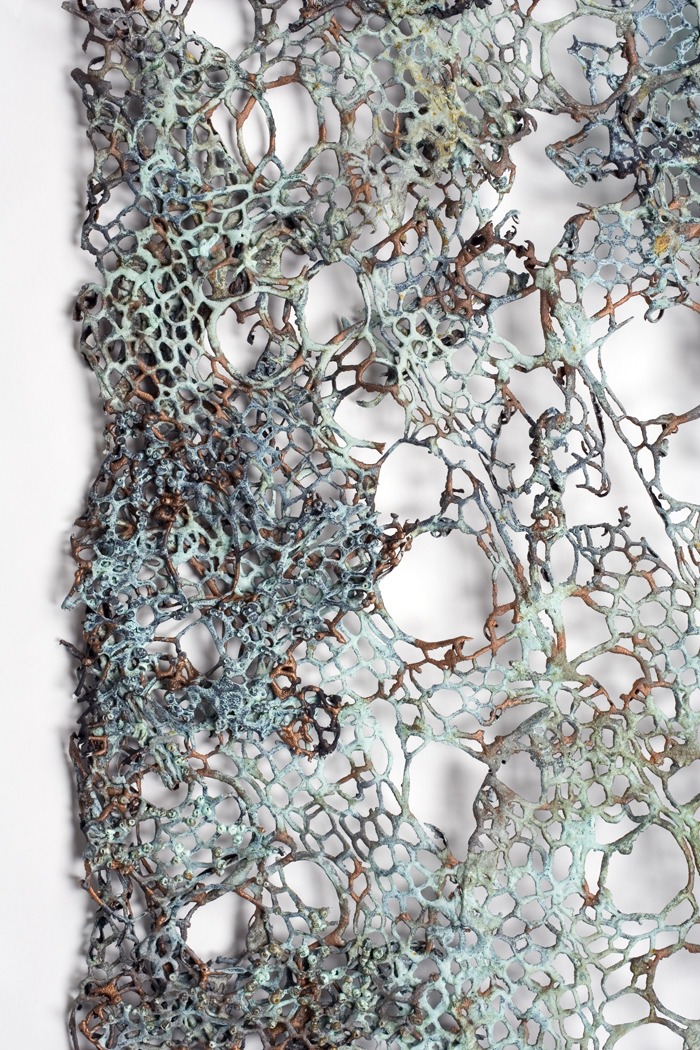
Interplay between concept and creation
How would you describe your work and where do you think it fits within the sphere of contemporary art?
I consider my work more mixed media, which enables me to exhibit with other media. The vision statement of my gallery with which I identify is:
‘We will maintain a presence at the intersection of craft and fine art, but strengthen the emphasis on context and the strength with which a piece communicates an overall message or perceptual response. We believe the interplay between how something is created physically and why it is created conceptually is what makes the intersection between craft and art so dynamic, and this is where our focus will be.’ From Tansey Contemporary (formerly Jane Sauer Gallery)
Tell us a bit about your process and what environment you like to work in?
I take photographs of trees, concentrating on their branch structure and transfer these images on to a silk screen. The image is then printed with a heat reactive base on a silk/cotton mix fabric. This is heated and the reactive base expands and becomes dimensional. The cellulose fibers are then eliminated with a mild acid (devore). This leaves just the image and the silk thread background. The structures are then stiffened and painted with pigments and metal patinas.
I work alone in the studio in my house, with occasional assistance from a former student to assemble my large pieces.
Do you use a sketchbook?
Drawing was one of my strengths, but I find that this doesn’t relate to the medium. I use collage techniques to piece together the elements I make with the devore process (Leaves, trees, etc).
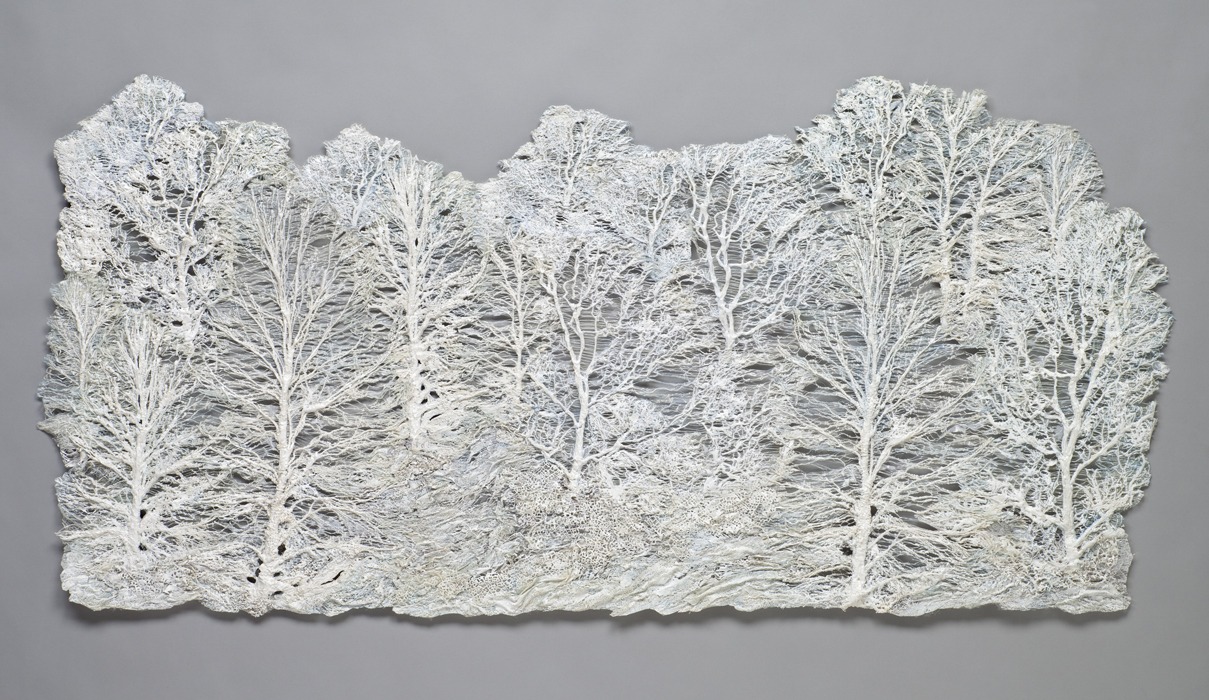
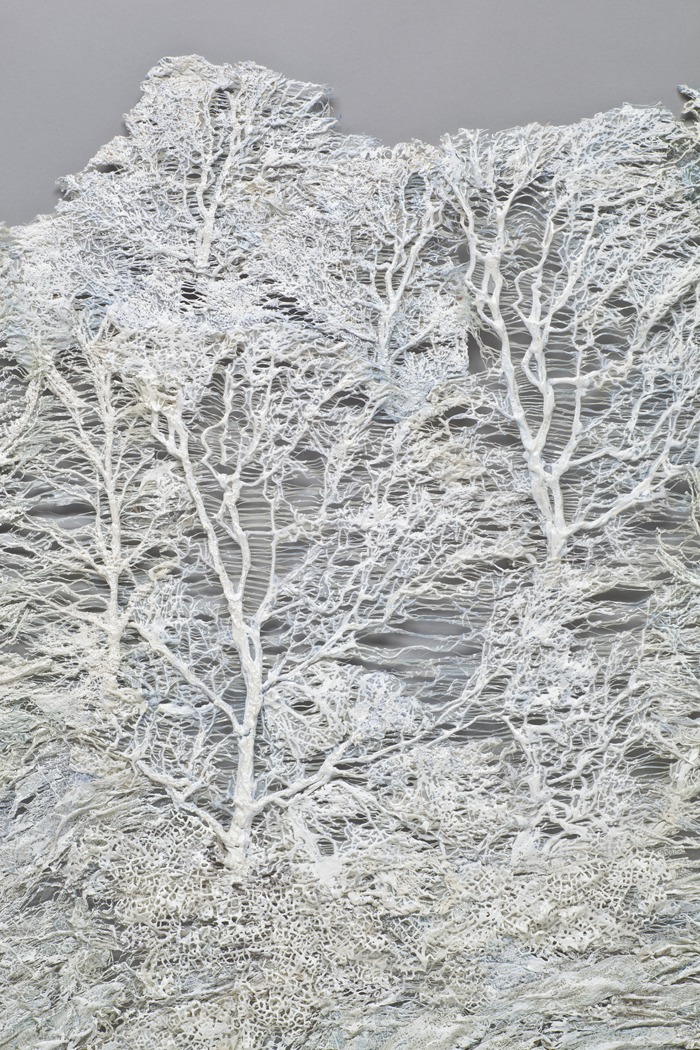
Exploring negative spaces
What currently inspires you and which other artists do you admire and why?
Nature always inspires me. I always feel drawn to lacy and perforated images, which explore negative space. I have always enjoyed the work of Andy Goldsworthy.
Tell us about a piece of work you have fond memories of and why?
“Forest Scape 1” is an earlier piece, where I first used reactive metals to achieve a patina surface. I created an effect I liked, but have not been able to replicate. The effect suggested an oriental mood and the piece was bought by a collector of Korean Art. I mean to try to create this effect again.
How has your work developed since you began and how do you see it evolving in the future?
My work seems to becoming more realistic, possibly as a result of peoples’ feedback. Although I also enjoy more abstract interpretations of the forest.
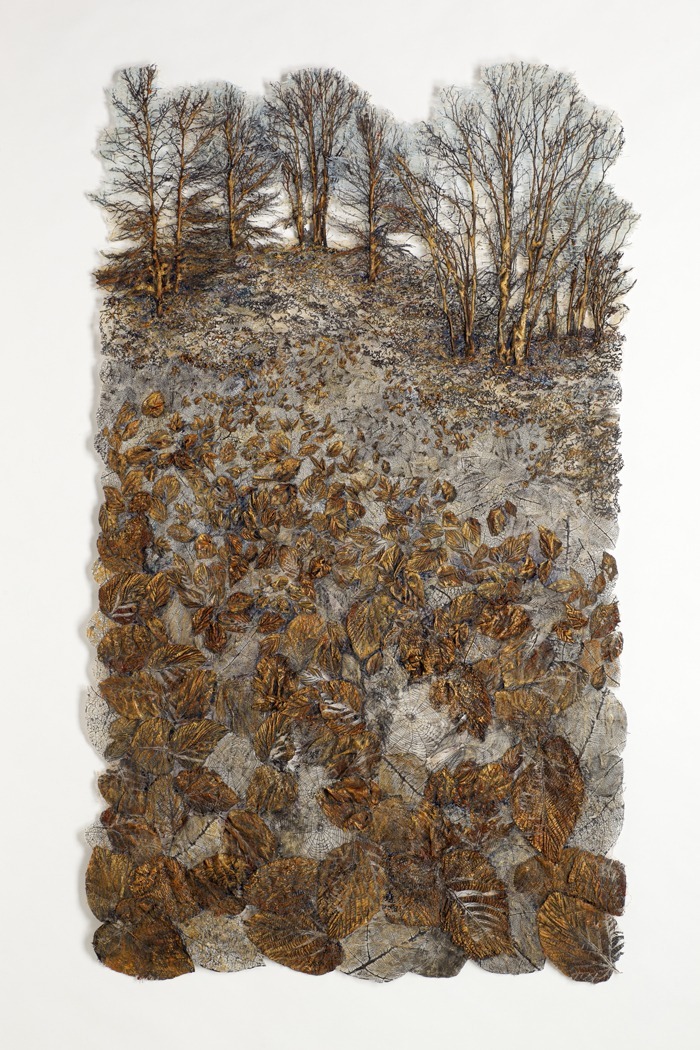
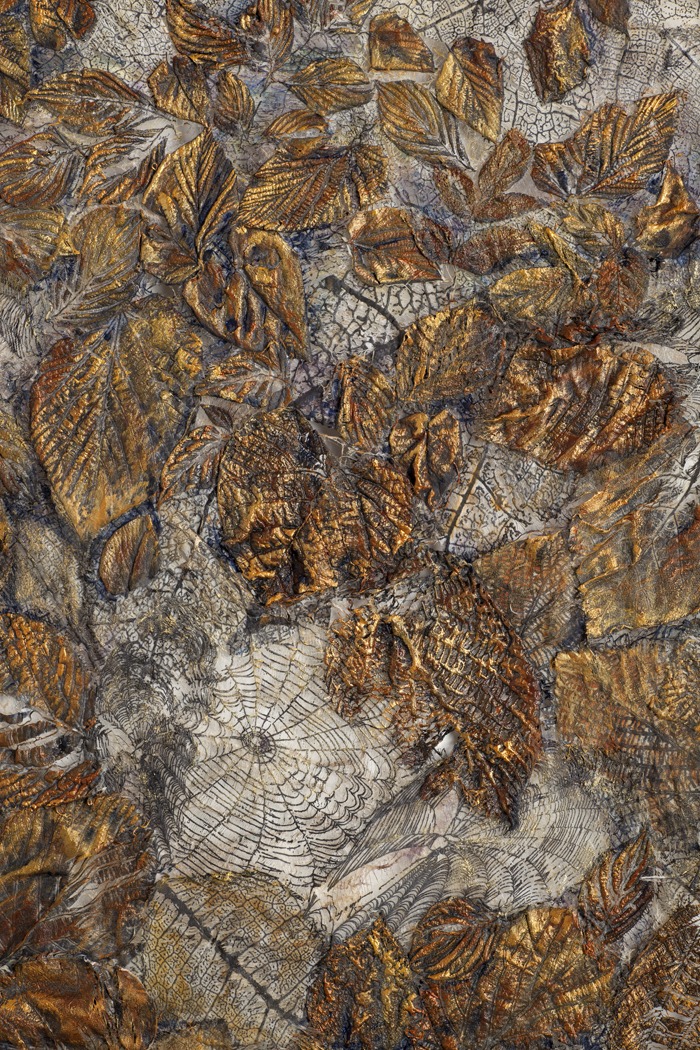
Inspiration outside of textiles
What advice would you give to an aspiring textile artist?
Remember to look for inspiration outside the textile field. Consider your future direction with respect to showing in a commercial gallery, art organizations etc; ask yourself if you want to develop practical or conceptual art.
Which book would you recommend as inspiration?
‘Textiles: The Art of Mankind ’ by Mary Schoeser.
What other resources do you use? Blogs, websites, magazines etc.
I subscribe to international textile magazines. We also have a local Surface Design Association with a very active organizer who keeps us all up to date with exciting textile news. She is Jennifer Love.
Do you give talks or run workshops or classes? If so where can readers find information about these?
I have given several talks at conferences and SOFA, but do not teach anymore. I retired in 2003 from 30 years of teaching and now just concentrate on my own work.
How do you go about choosing where to show your work?
I check major magazines, for any competitions, usually international. I often note who the jurors are and how much exposure the exhibition will receive. Also who the other exhibitors are and if my work is compatible.
My gallery is in Santa Fe, New Mexico, USA, now called Tansey Contemporary. (Formerly Jane Sauer Gallery)
The gallery usually takes my work to SOFA Chicago.
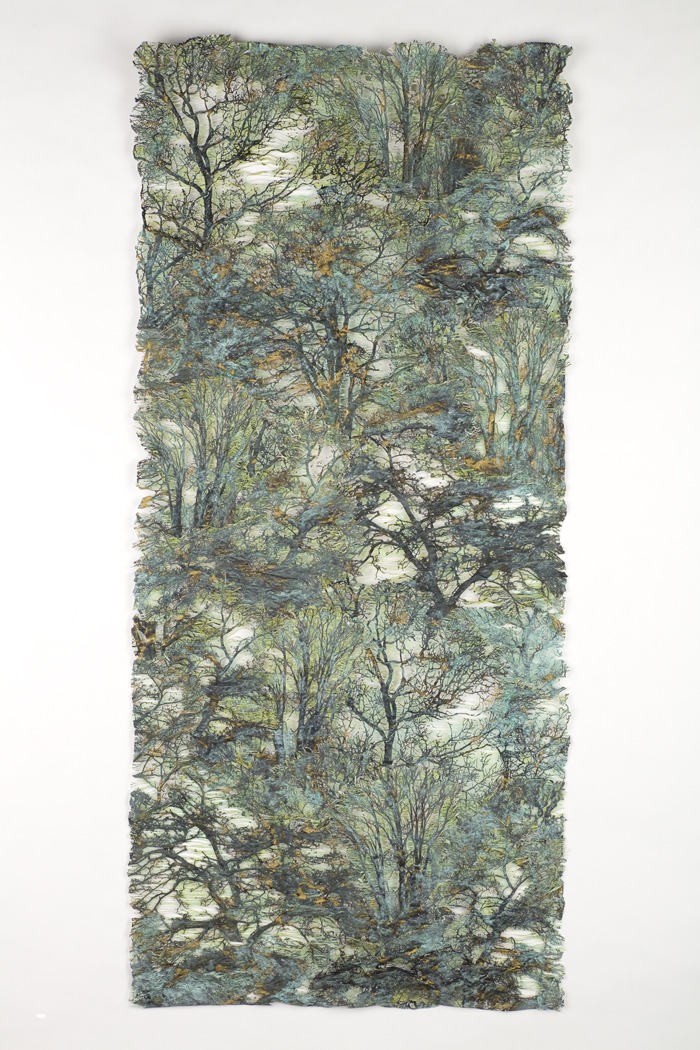
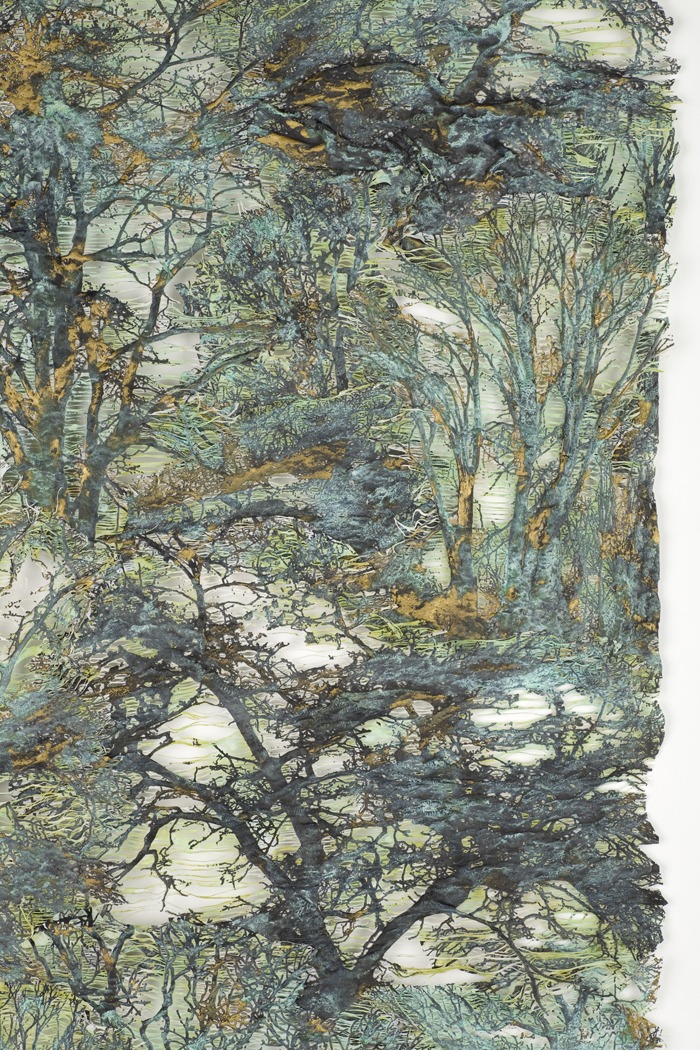
To find out more about Lesley Richmond visit LesleyRichmond.com
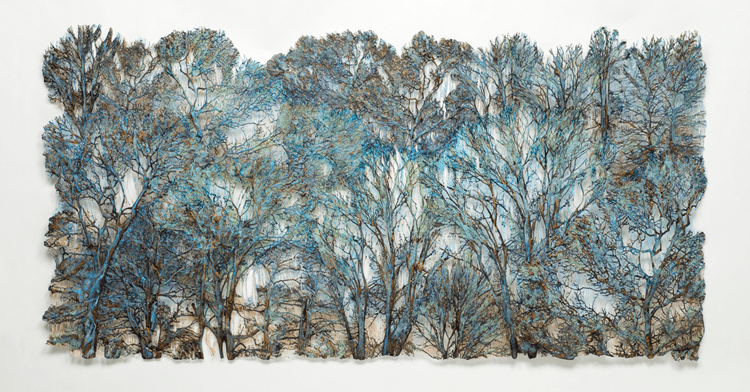

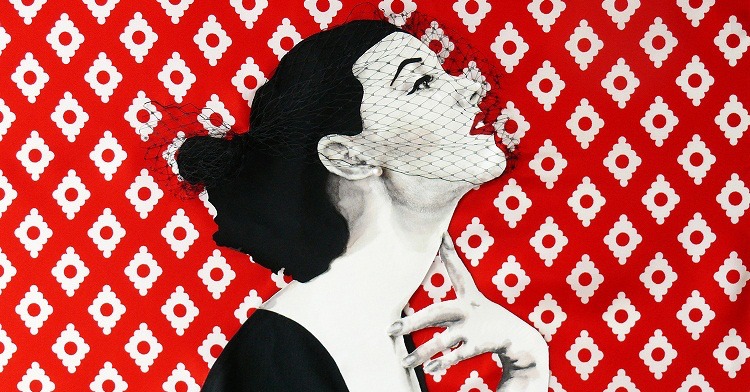
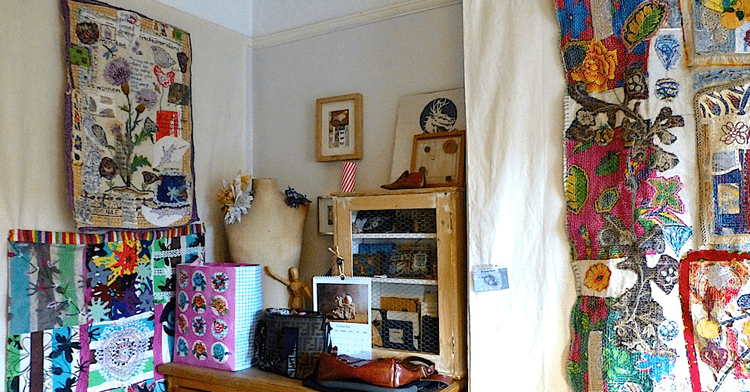
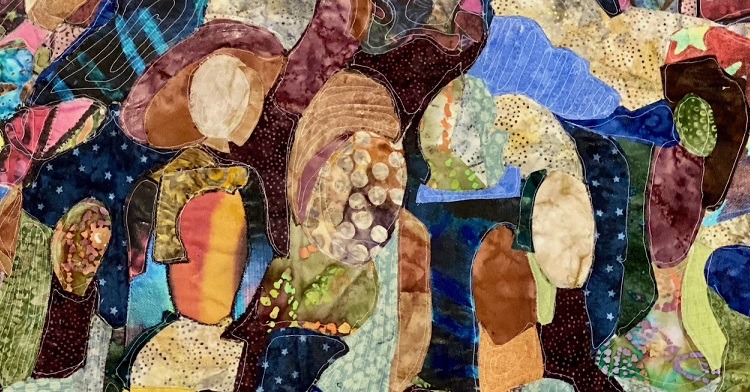
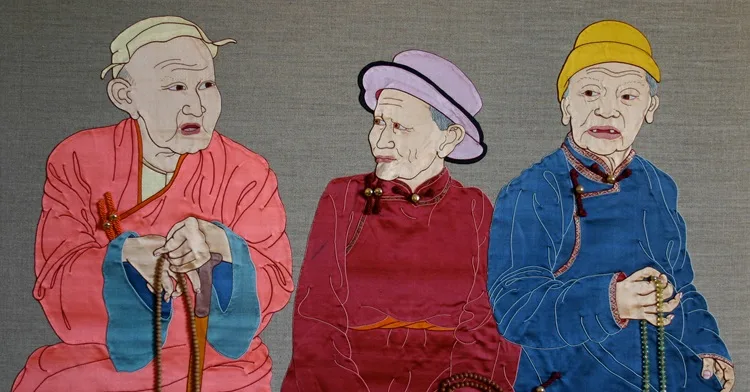
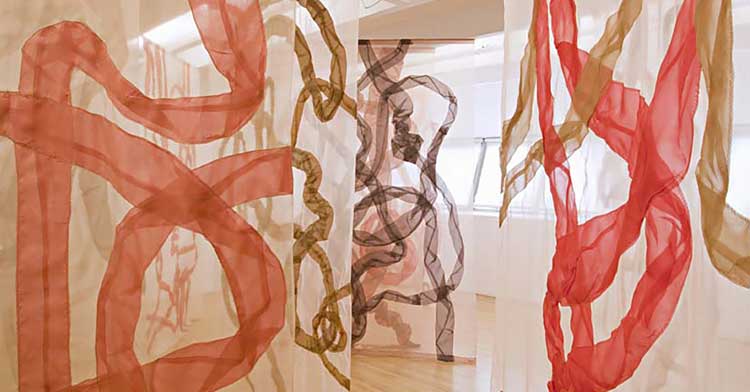
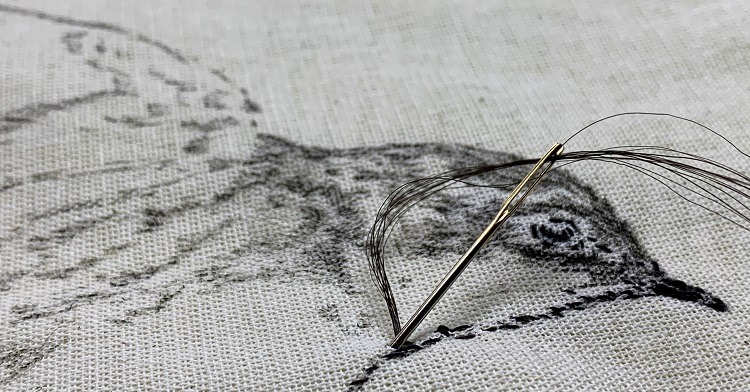
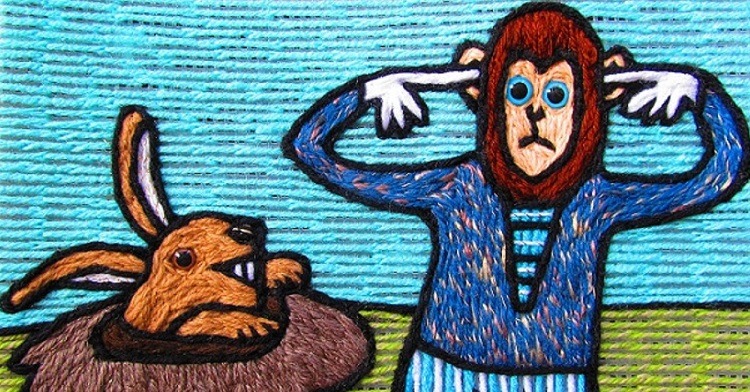
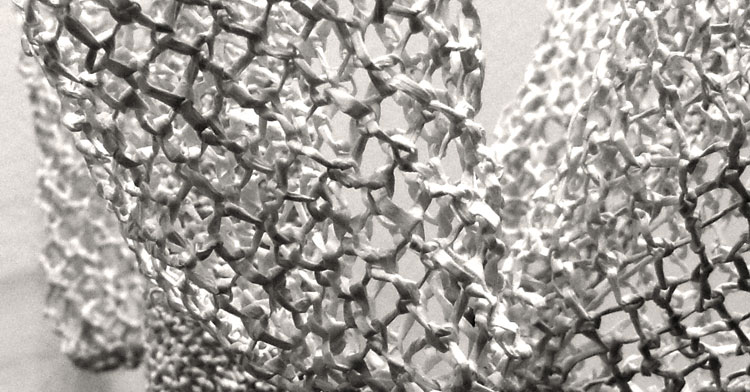
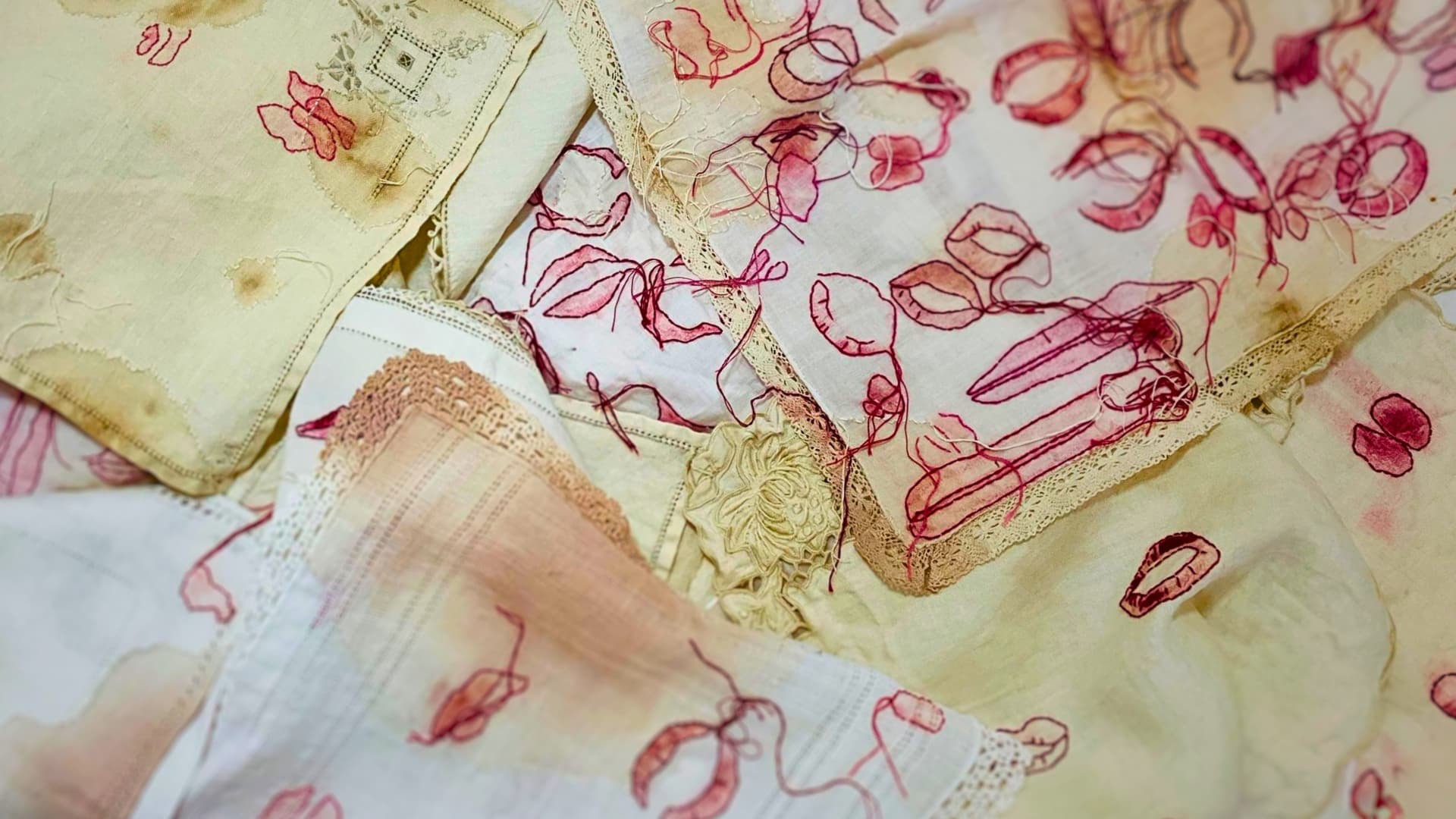
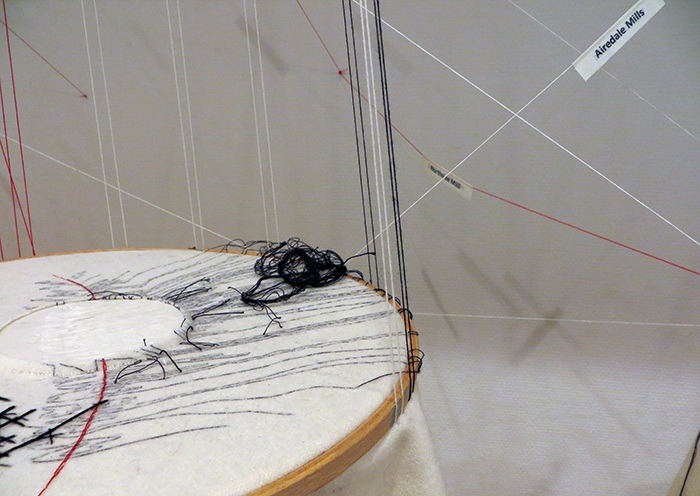
Comments